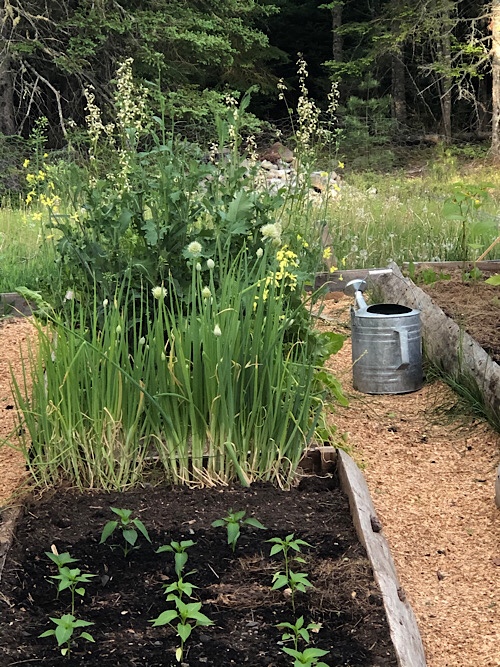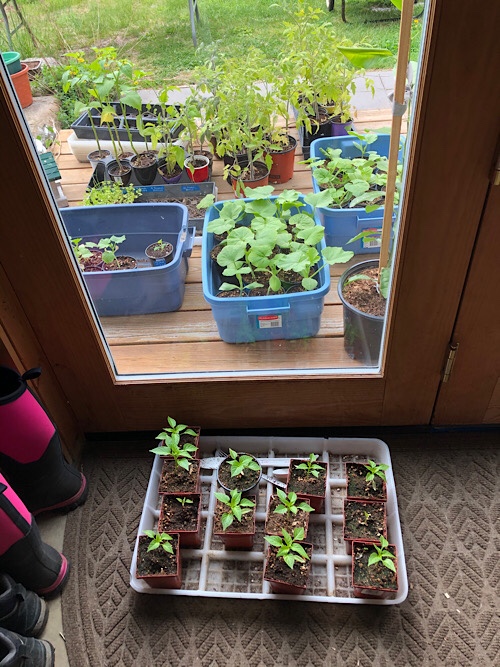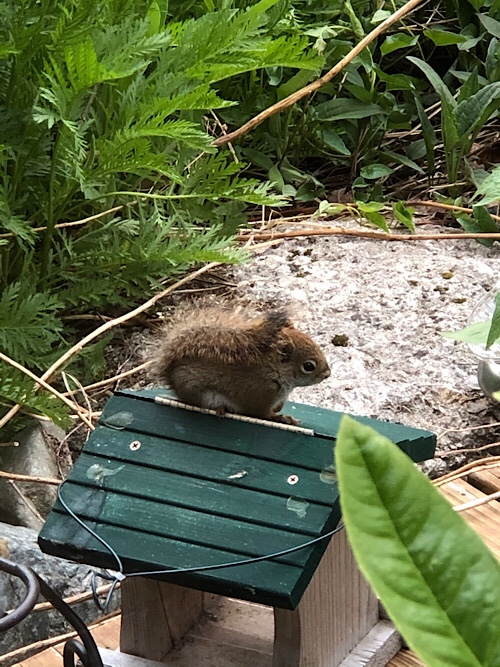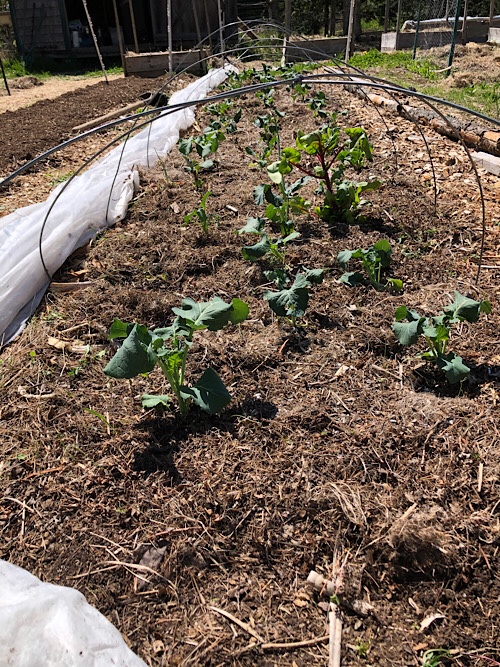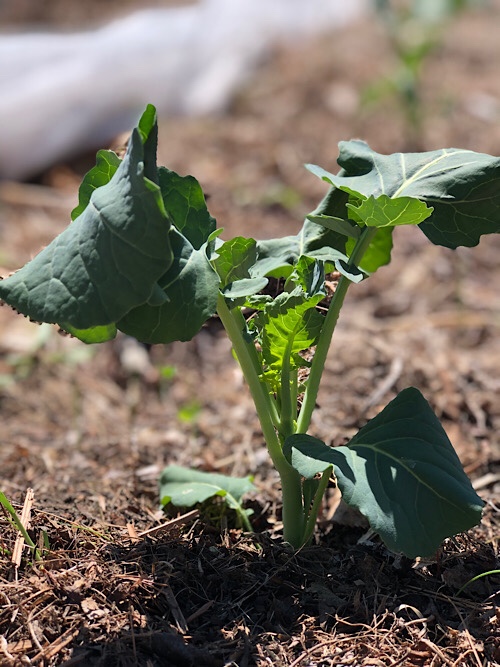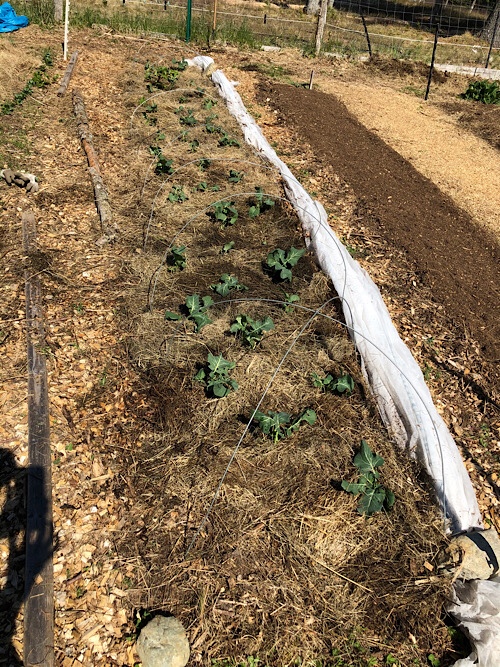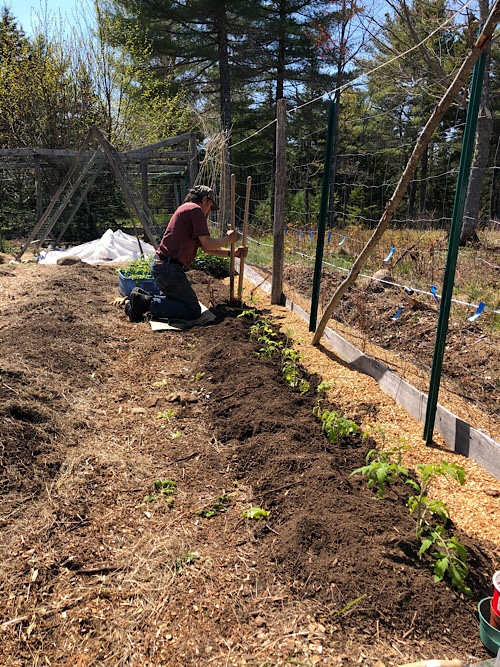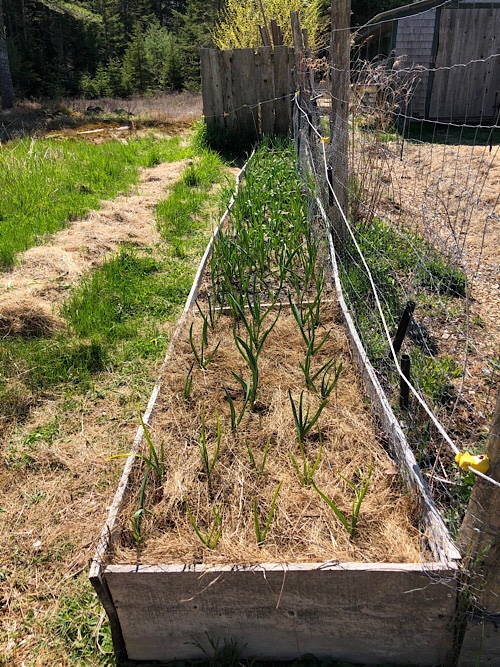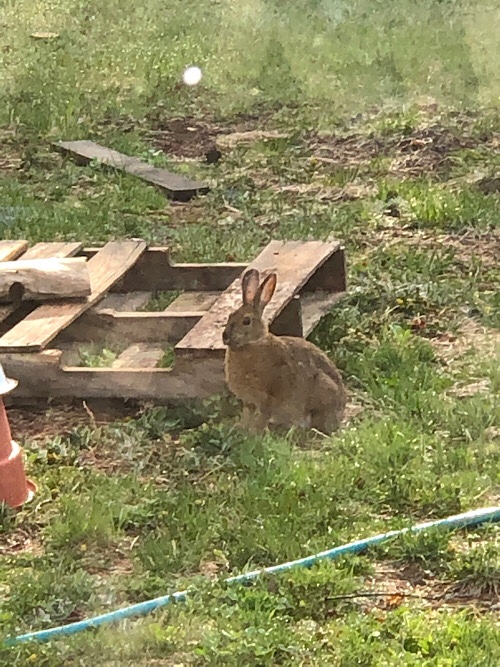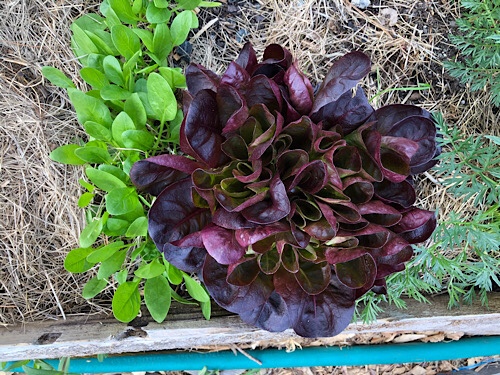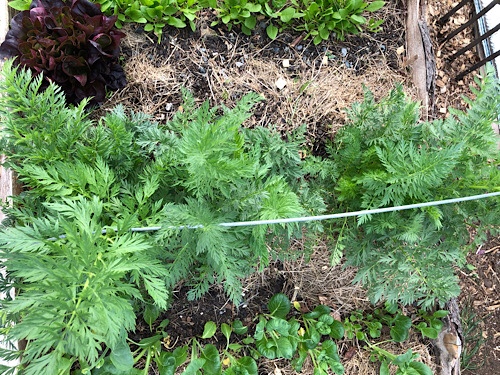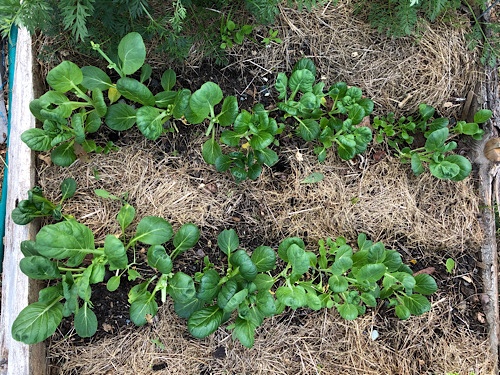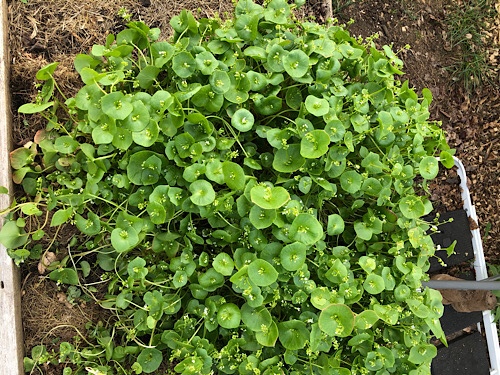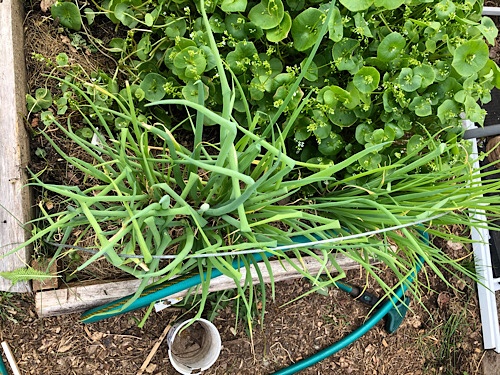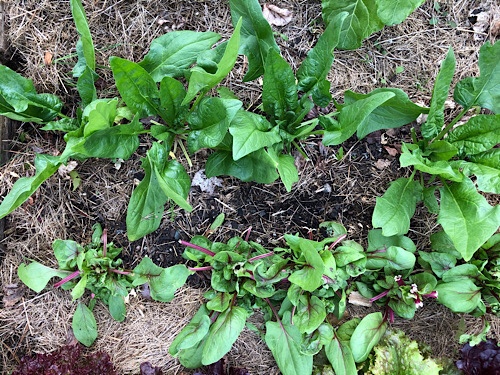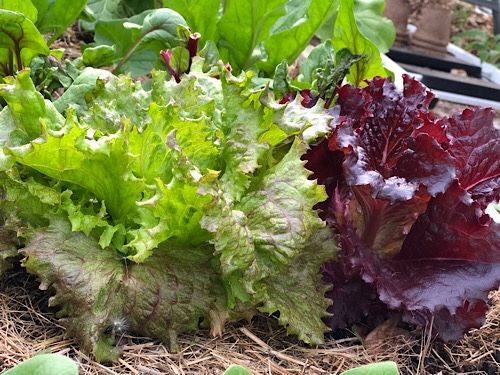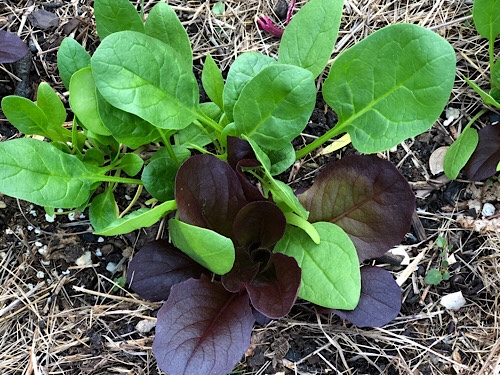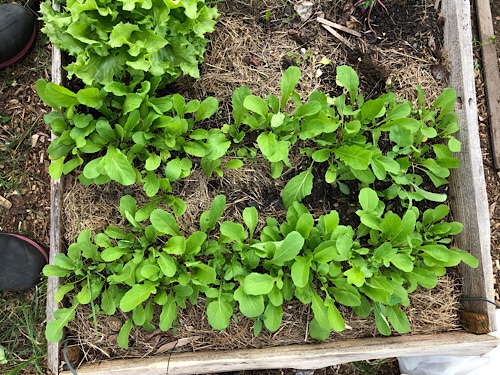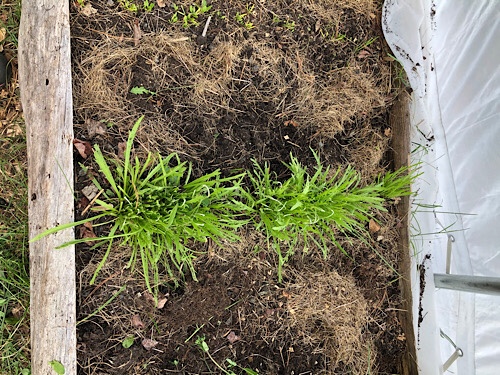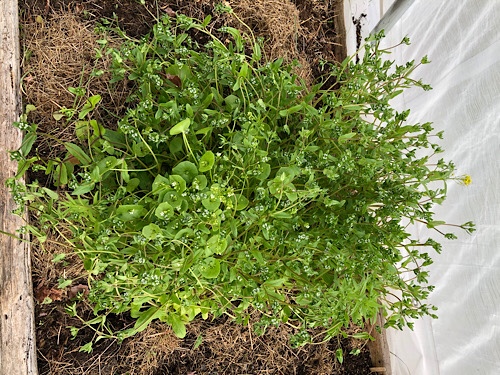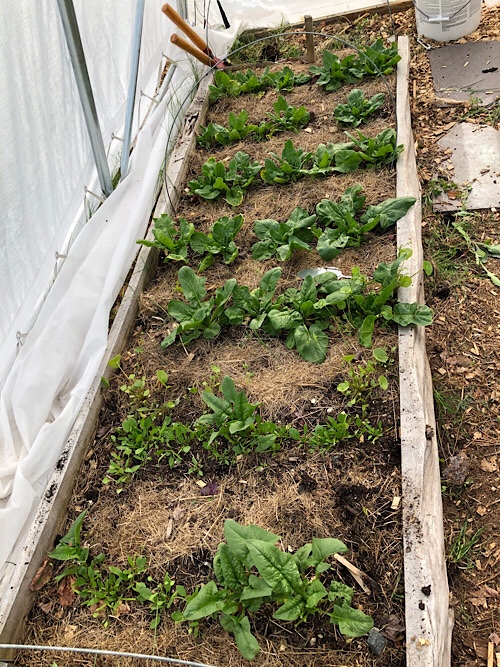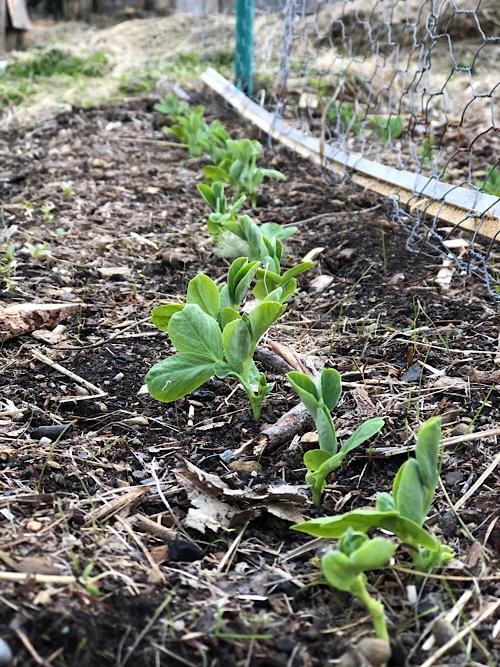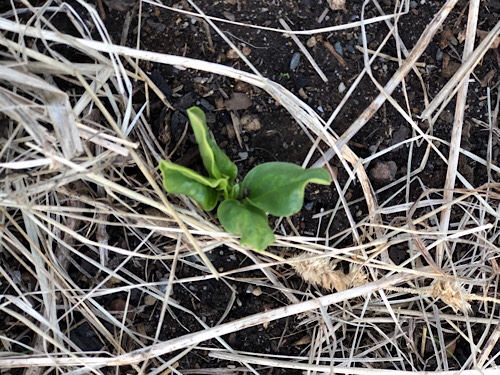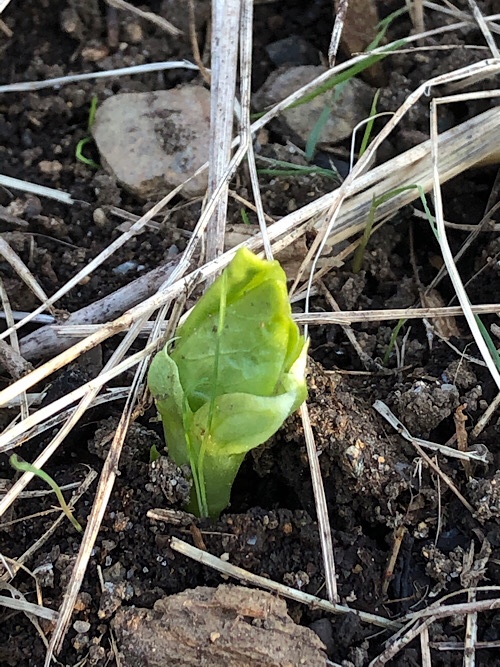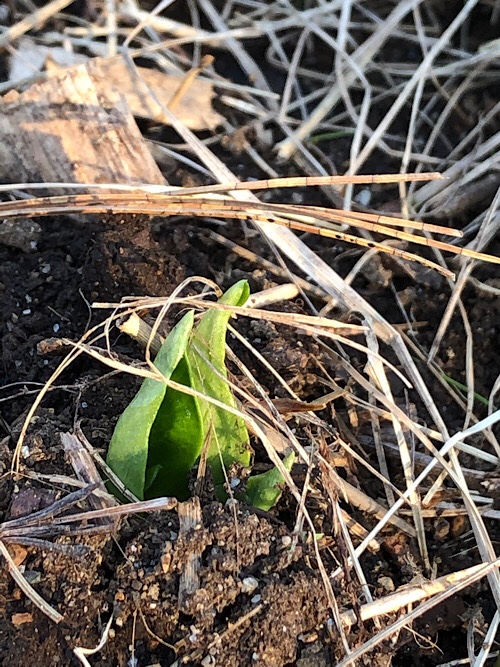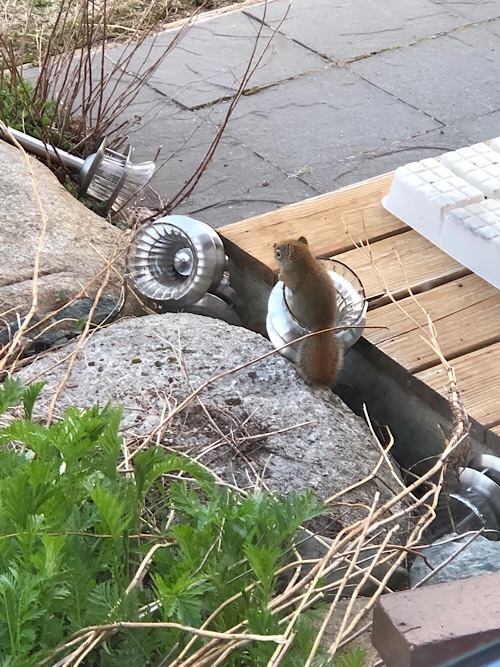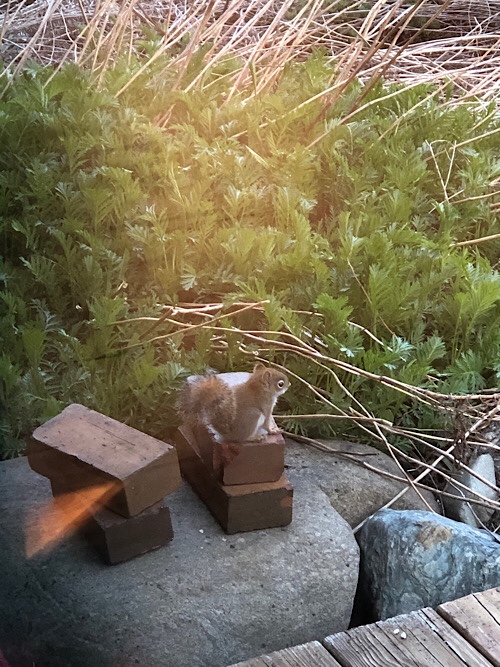This gardening season I hope to post more often and focus on individual crops. We have had a big breakthrough this past year with one of our favorite crops: spinach. It seems we are finally getting a handle on what it takes to supply (almost) our year-round craving for spinach.
August 23, 2019: planted two rows of leaf spinach in hoophouse, Red Kitten and Space. We ate these all winter, sparingly, and the plants are just starting to give out. I pulled up all the Red Kitten yesterday and will probably pull up the Space shortly. Next August: double (or triple?) the amount of leaf spinach.
September 12, 2019: planted 5 rows of winter spinach in hoophouse. September 19, planted two more rows after hot peppers were harvested. Varieties: mostly Olympia, some Winter Bloomsdale. These grew slightly, then stopped. They really took off in March though, providing an abundance of huge delicious leaves. Next time: plant 7 or more rows again, maybe earlier depending on space available.
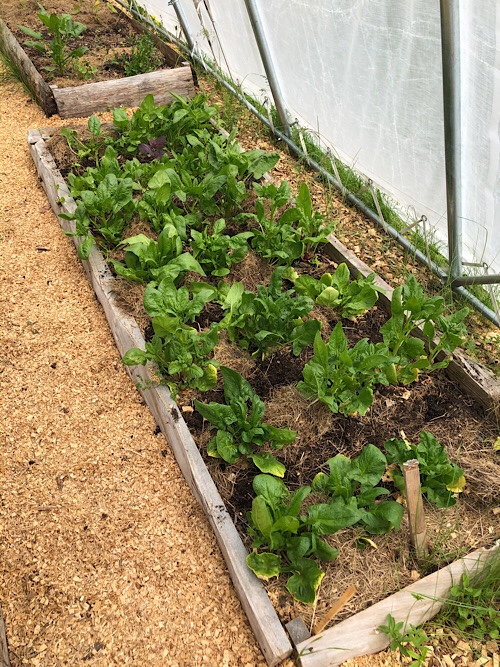
Eventually these will bolt, I’m surprised they haven’t yet. (The lone Winter Bloomsdale in the back bed, upper left in photo, has bolted.) Today I scratched 5 rows between them and planted basil seeds for summer. The plantings can intermingle for awhile.
Note: I tried the same planting outdoors in a row in the main garden. Planted October 18, 2019, and applied a heavy layer of hay mulch. I got nothing. Not sure what happened, maybe planted too late or maybe not enough protection outside. In any case, the hoophouse planting was sufficient. I won’t bother trying to overwinter spinach outdoors as long as I have a hoophouse or greenhouse.
March 12, 2020: planted all the remaining Space seeds in the hoophouse. We had to remove some dead plants from the winter so there was space for the Space! This gave us some nice fresh looking leaf spinach during the spring months and still looks good. One row in the back of the back bed was stunted and didn’t produce. Maybe it got too cold?
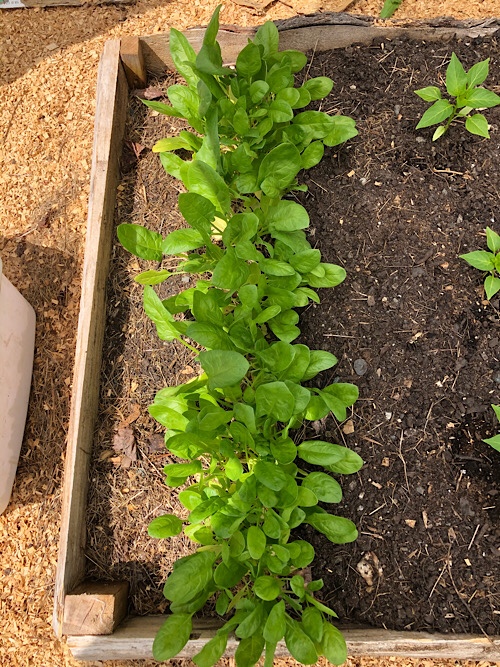
March 26, 2020: planted a short row of Red Kitten outdoors next to the peas. This early planting has done well and is ready to start eating. Next time: plant more in late March.
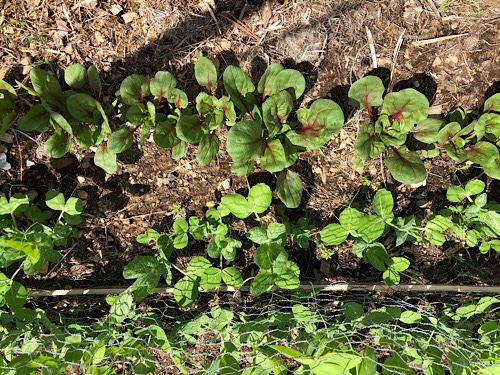
April 14, 2020: planted a square of Red Kitten under the corner trellis. The idea is that it will be shaded here during the heat of summer by the climbing vines of cucumbers and green beans. Maybe I’ll plant more soon because flea beetle have attacked the rabe and arugula I planted under here.
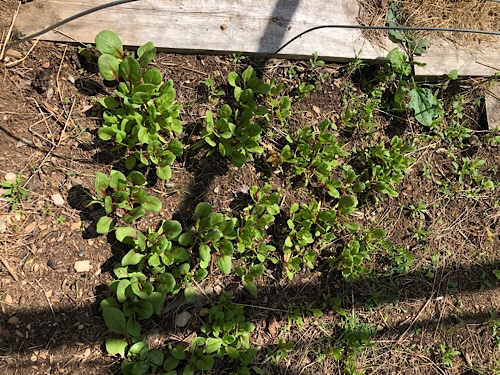
So I have satisfied our desire for spinach all winter and spring! We have eaten pounds of it this week! So pleased.
Now I just need to keep it going through summer and fall. I still have plenty of seeds for Red Kitten, Winter Bloomsdale, and Olympia. Need to buy more Space, which has been really a good performer.
And we are no longer buying those plastic tubs of spinach leaves from the grocery store!
